#mid 16th century
Text

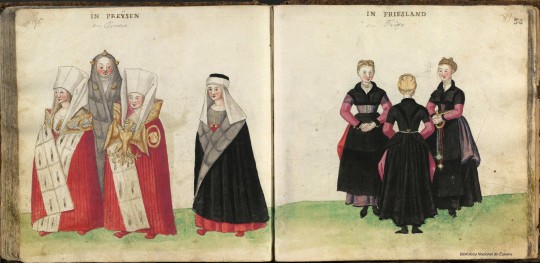





Códice de Trajes, costumes from the realms of Charles V, Holy Roman Emperor and King of Spain, made in Germany in mid 16th century (1540s-1550s)
Prussia
Prussia and Friesland
Schwabia and Elzach
Juelich
Frisia
Germany
German dance
#germany#manuscript#16th century#mdpillustration#illustration#costume illustration#1540s#1550s#holy roman empire#16th c. holy roman empire#prussia#mid 16th century
409 notes
·
View notes
Text

Giuseppe Arcimboldo (1526/1527-1593)
"Winter" (1563)
Oil on wood
Located in the Kunsthistorisches Museum, Vienna, Austria
#paintings#art#artwork#allegorical painting#winter#giuseppe arcimboldo#oil on wood#oil on wood panel#fine art#art gallery#italian artist#1560s#mid 1500s#mid 16th century
287 notes
·
View notes
Text

A French Galleon from Guillaume Le Testu's Cosmographie Universelle 1555
40 notes
·
View notes
Text
the academic warrior died in me but im still so passionate about it
#esp anyhting pre 16th century im clinging to it and i love to see traces of it in more modern literature and art#zero traces of anything significant in bnha (except for one shigaraki moment) life is so hard when you like mid shonen
11 notes
·
View notes
Text
had a dream about wearing a soft warm brown leather maison margiela jacket from 2004 and then coming across an insane mcqueen tudor inspired jacket from like 98 that was all supple calfskin but had huge puffed out shoulders then went skin tight below the elbow and had a doublet piece attached too and it was all leather .. it was beautiful im so mad it wasnt real lol
slightly similar to these
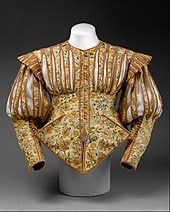

2 notes
·
View notes
Text

small segment of my glumdalclitch court dress concept ........ i didn't like the rest 😑 clashes too much
#this is from a few days ago when i watched that adaptation of gulliver's travels#i forgot about it until right now though#anyway uh her clothing wasn't supposed to be based on a specific time or place#but now that i'm looking it's clearly several time periods of england & a little mid-16th century italian#huh.#(two of the time periods aren't visible here btw)#glumdalclitch#gulliver's travels#<- for me. ik rbs are off
2 notes
·
View notes
Text

really delightful to realize that like yeah folks have always been fucking unhinged about love.
#john donne in the mid 16th century: KILL ME!!! KILL ME AND DISSECT ME AND PIN MY TWISTED CORPSE UP AS A WARNING!!#me today: god he would have done numbers.#txt
0 notes
Text


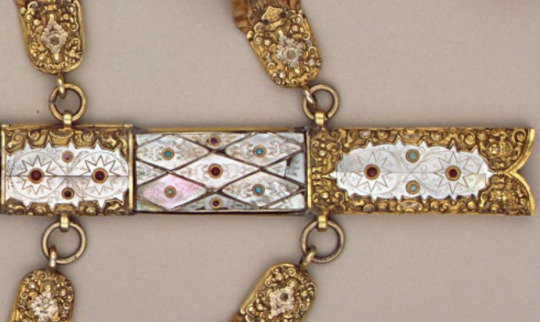
Sword presented from the Republic of Venice to King Sigismund I of Poland, mid 16th century
from The State Hermitage Museum, St. Petersburg
1K notes
·
View notes
Text

Playing with a new brush set & drawing Elizabethan-esque dresses✨️
(I guess mid-late 16th century is a more accurate term)
Zelda's royal dress in BOTW had some historical elements I had fun exploring.
#i used elizabethan as catch-all#plz don't at me#pretty people in pretty clothes make me live#legend of zelda#breath of the wild#zelda#sien draws#sien vega#fan art#digital painting#character design#historical costuming#ish?
800 notes
·
View notes
Text
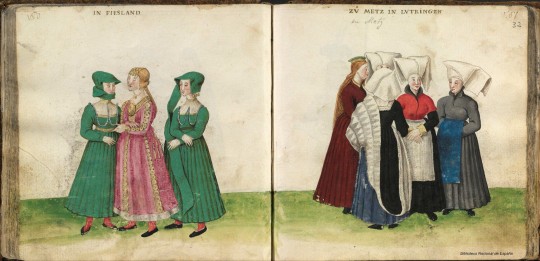



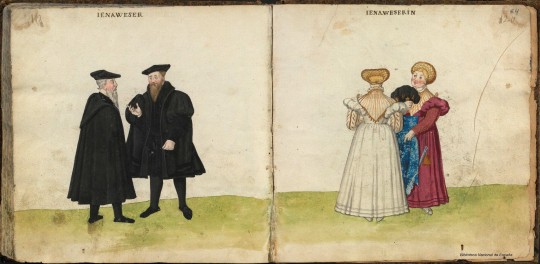
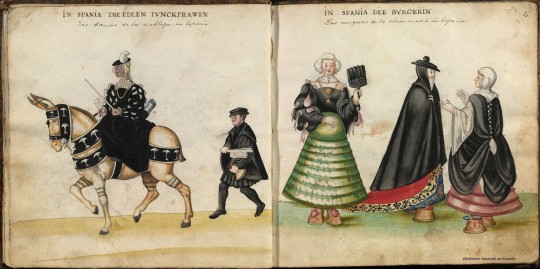

Códice de Trajes, costumes from the realms of Charles V, Holy Roman Emperor and King of Spain, made in Germany in mid 16th century (1540s-1550s)
Friesland and Metz
Netherlands and Gederland
Gelerland
Portugal
Genoa
Spain
Spanish dance
#costume illustration#16th century#mid 16th century#mdpillustration#spain#italy#netherlands#germany#portugal#manuscript#16th c. portugal#16th c. spain#16th c. germany#16th c. netherlands#16th c. italy#traditional dress#1540s#1550s
299 notes
·
View notes
Note
do u have a specific year in mind or is it just general 16th century vibes
Very late 16th century. I'm reluctant to assign them specific years because I prefer to have just a little bit of wiggle room, I'd go crazy if I had to map out their timeline to follow real life historical details to a T (it's not impossible to do that by any means, I'm just not strong enough weh). For example, I tend to use a lot of early to mid 1500's references for Vasco's wardrobe, by the end of the century fashion had already started to take somewhat darker and more rigid direction and I like to keep Vasco's attires colorful, voluminous and eyecatching. Mostly to highlight their visual contrast to Machete's angular and constricted silhouettes and predominantly black palette.
I keep calling them late Renaissance dogs but in truth they're closer to early Baroque. At the moment I'd say they were probably born in the 1570's, Vasco is a couple years older than Machete but in the grand picture they're practically the same age. In the bad ending Machete dies in his early/mid 40's, that would mean a little after the turn of the century. Vasco lives to his 70's so he'd still be around in... 1640, right? But again, I don't like giving them fixed dates, I'm just thinking out loud. Might go back and retcon this in the future if I change my mind in a way or another.
221 notes
·
View notes
Text
Sea Shanties and Shipboard Music aboard Warships
Traditionally, sea shanties were sung on board both warships and merchant ships to help light the work involved in sailing the ship. They are usually divided into two main groups - capstan shanties, designed to accompany the hard effort involved in heaving on the bars of the ship's capstan, and halyard shanties, where either the rhythm or the words were designed to help the men pull together, for instance when raising a sail pr raising up a new spar to the masthead.
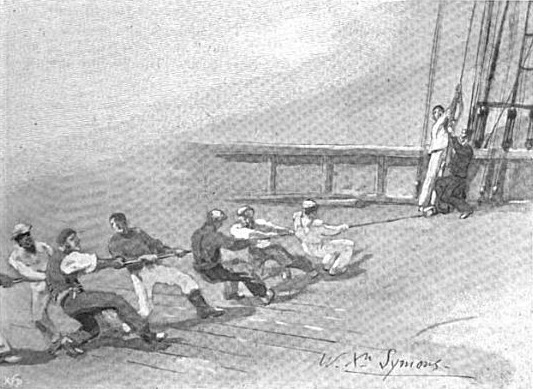
Most shanties follow the same pattern, with short versesand boisterous but repetitive choruses. Sometimes the lyrics were either made up aas the seamen went along, or else improvised or repeated, especially if the task proved longer than the shanty. The words were often less important than the rhythm of the song, although some shanties such Shenandoah or Blow the Man Down have become famous as songs in their own right. Oh and by the way the first known shanties date from the mid-16th century, recorded in the Complaynt of Scotland (1549), but their origins probably lie much further back than that.
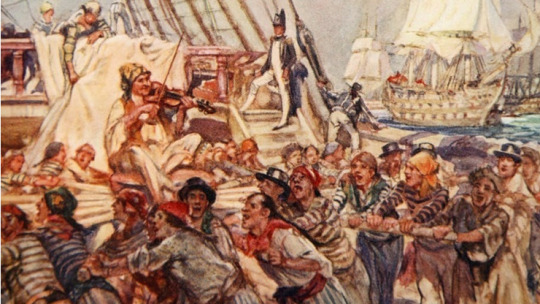
It has been argued that sea shanties were much more commonplace on merchant vessels than on warships, as the later were comparatively well manned, so the labour involved in sailing the ship was less arduous. This theory isn't borne out by what we know about life in the sailing navies of the world. While shanties might have been less commonly used as working songs, they were widdely sung as a means of recreation. Music was important on board a sailing man o'war, and instruments such as fiddles, fifes and flutes were often played when sailors were off-duty. And the sailors loved singing on board until ordered to their hammocks at pipe down, these shanties are known as fo'c's'le songs or forebitters. Dancing was also popular, and many captains encouraged it, as a way of keeping spirits high and of providing exercise.

Popular songs in the Royal Navy during the Napoleonic Wars were Nancy Dawson, Spanish Ladies and Drops of Brandy and some ships carried an official band, and during the approach of the British Fleet to the enemy at the Battle of Trafalgar, many ships played Rule Britannia, Hearts of Oak or Britons Strike Home.
Shanties during work on board depended on the captain, because not everyone wanted music. It was more like silence aboard a warship so that the men could hear the orders better and not get lost in the singing. But it also happened that there was singing or a flute was played when the anchor was being aweight but that mostly depending on the situation on the ship.
Well the truth was, music such as sea shanties made the work appear easier, whether on board a merchant vessel or a warship. But the shanties went out of favour with the coming of steam. With no sails to raise, and with steam powered capstans there was little need to sing during work. By the later 19th century they had lost their original workmanlike purpose, and shanties became something that were sung for fun and get mixed with the so called sailors songs, rather than as a song of work.
#naval history#sea shanties#mid 16th century -19th century#age of discovery#age of sail#age of steam
291 notes
·
View notes
Text

Rome’s 'Lost' Imperial Palace 'Domus Tiberiana' Reopens
Until recently a crumbling and off-limits ruin near the famous Colosseum, the Domus Tiberiana palace — built in the first century AD and beloved by Nero — hopes to once again take its place as one of the city’s top tourist attractions.
The ancient palace sits on Palatine Hill — the city’s oldest hill, overhanging Rome —from where imperial dynasties ruled for centuries. But over the years, the site fell into disrepair and in the 1970s, the Domus Tiberiana site was shut due to the structural instability of some of the ruins. The closure left behind what many Romans described as a “black hole” in the capital’s archaeological heart.
Now, after a six-year makeover, the palace has reopened its doors as a “diffuse museum,” with findings and frescoes scattered across the site to provide visitors with an insight into the palace’s ancient grandeur.

And it was grand. The Domus Tiberiana was Rome’s first imperial palace, built by the emperor Tiberius who combined and incorporated the pre-existing noble mansions built on the hill. Occupying over four hectares, the palace featured residences alongside large gardens, places of worship and rooms for the emperor’s Praetorian guard.
As the seat of Rome’s power and politics, Domus Tiberiana held a prime location, high above the Palatine and Roman Forums, offering its occupants a “balcony view of the city.” Over time, the Domus was embellished and enlarged by other emperors including Nero, who was crowned on its steps aged just 16, in 54 AD.
Alfonsina Russo, director of the Colosseum’s archaeological park (in which Domus Tiberiana falls) and lead archaeologist on the renovation, said that ancient antiquities, many exceptionally well-preserved, were unearthed during the project.
The artifacts — bright stuccos, frescoes, amphorae, potteries, looms, terracotta, and divinity statues related to the cults of Isis, Dionysius and Mithras — offer visitors a trip through time, said Russo.

“They make this place — formerly (inhabited) by aristocratic families, then Roman emperors — feel alive again,” she said. “There are seven exhibition rooms full of extraordinary finds, starting with those preceding the original construction of the palace when aristocrats lived in mansions before Tiberius subsumed them into the Domus.”
Among the newly-exposed and frescoes are some of the earliest paintings of lemons (considered an exotic fruit in Ancient Rome, as they hailed from the Far East) and a depiction of a gladiator, proving that the era’s gladiatoral games were appreciated by rich families, explained Russo.
The imperial palace remained in use until the 7th century, when it became the papal residence of John VII. In the mid-16th century, the aristocratic Farnese family — who were powerful local landowners — built the lavish Orti Farnesiani gardens on the site, adorning it with ornaments and sculptures of nymphs, satyrs and fauns.
“This monument speaks of history,” Russo added. “We have restored (Domus Tiberiana) to its past splendor, but more work lies ahead.”
Indeed, painstaking efforts have been made to blend old and new. A series of majestic, reddish-brown vaulted arches that greet visitors having been carefully reconstructed with the same materials as ancient Romans used in the past.
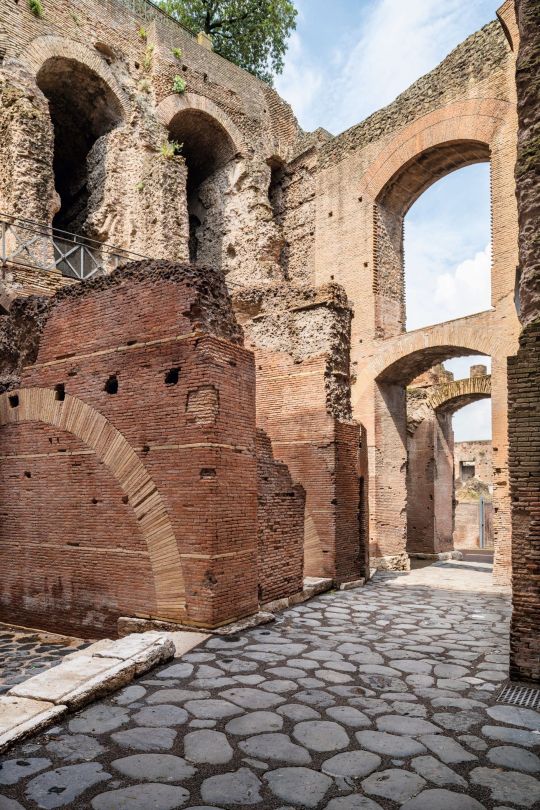
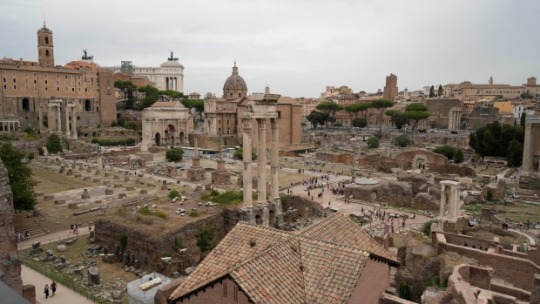
“What makes this revamped Domus unique is the architectural style,” said Russo. “We managed to use original materials to reinforce and strengthen the handmade 15-meter (50ft) tall front arches (which run alongside the palace’s) ancient paving.”
It has certainly caught the public’s attention. Since reopening at the end of September, Domus Tiberiana has attracted some 400,000 visitors, a “huge success,” said Russo, adding that she believes that this incarnation of the Domus Tiberiana offers visitors the most “evocative” visit in generations.

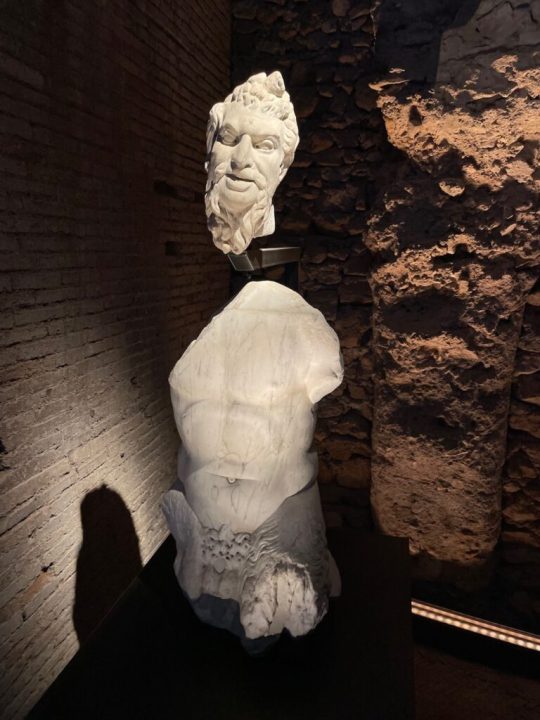
Archaeologist and scholar of ancient Rome Giorgio Franchetti saidN that, in the reopening of the Domus Tiberiana complex, Rome has “recovered a lost jewel.”
“The Palatine Hill has always been the stage of Rome’s power politics,” he said in an interview. “Tiberius likely chose this spot to build the palace as it was where his family residence stood. There aren’t many places like the Domus Tiberiana where you can really breathe the past.”
By Silvia Marchetti.
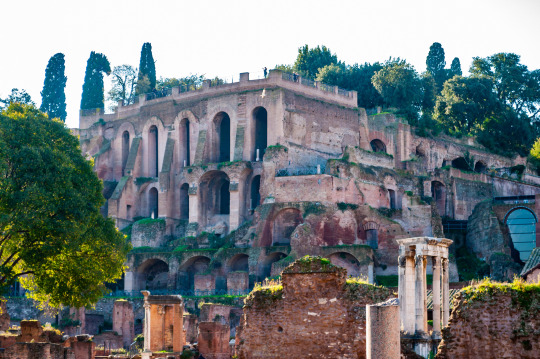


#Rome’s 'Lost' Imperial Palace 'Domus Tiberiana' Reopens#Domus Tiberiana palace#Palatine Hill#Emperor Tiberius#Emperor Nero#ancient artifacts#archeology#archeolgst#history#history news#ancient history#ancient culture#ancient civilizations#ancient rome#roman history#roman empire#roman emperor#roman art
263 notes
·
View notes
Note
why was summoning angels illegal?
The Catholic churches general position was that all these non-canon mystical/occult texts were either wastes of time, or were only going to hurt people stupid enough to mess with them. If they COULD give you an audience with some sort of entity, you weren't talking to angels, you were talking to demons who were lying and saying they were angels.
Because the idea that people could draw some runes and do a jig and get an Angel Of The Lord on the phone directly challenged the Church's monopoly on People Who Can Talk To God. It challenged their political authority. So when they hear that one of Queen Elizabeth's advisors is doing weird occult shit on the continent, they wanna make sure that nobody is trying to start a religious movement that might undermine the power of the church.
And remember! This is the mid 16th century. The protestant reformation JUST happened. The papal nuncios (is that the right plural?) We're trying to keep a tight lid on anything outside their purview.
686 notes
·
View notes
Text
sota's brave confession of love being that episode:


[worth noting here that in the dub the way richard says "WHAT-ever..." priceless.]


[also worth noting that in the dub he says "you already said that" instead of "hah! what're you saying?!" which feels more like an inuyasha response to me. then again we'll never know since this is technically anime-only, and while i tend not to like a lot of inuyasha filler, if it's in the modern day i will eat it up. every. time.]

inuyasha being stunned by the sheer amount of goods in a grocery store...gold. earlier in this episode he also seemed enamored by baked goods, and i wonder if he's ever really had anything resembling it? bread made its way to japan mid-16th century via portuguese traders, so it's likely he's never had anything like it and the smell must've been new to him - it would've been interesting if we'd seen him trying all these new foods!


i can never decide whether or not sunrise likes inukag bc they'll cut out canon scenes of them but then insert scenes like this in their filler eps...what game are ya'll playing? but flustered inuyasha is adorable so i can't complain this time.

eavesdropping...

i'm sorry WHERE is he getting these questions from i actually burst out laughing



called out by an eight year old...




i don't care whether or not this is ooc because i laughed way too hard like he really got dragged from potential sleep to deal with this LMAO


this is the cutest thing i've ever seen and it only gets better:

shortly after: sota getting kicked out of his own house after chickening out for the tenth time this episode



smol






flustered inukag my beloved...
anyway this episode is a dumb fun and i love it to an insane degree. the only part i would say is out of character (at least, more out of character than sunrise already does inuyasha) is when he literally makes this face at the thought of confessing to kagome:

coming from the guy who was pretty open about his feelings in the manga and quite literally told kagome - thinking she was hearing him - that he likes seeing her smile and feels relieved when he's by her side, i don't see him getting this flustered - but the face he makes is priceless.
#the amount of times i've rewatched this episode can't be counted tbh#i loved seeing inukag try to help sota confess with various methods#from kagome dressing him up to inuyasha “training” him#they hyped him up soo bad this ep lmao#too bad it didn't pay off since he interrupted them like five seasons later#there's another scene where inuyasha and kagome are like “why doesn't he just get over himself and confess” which in isolation is funny#but when i think about it they weren't even that dense in the manga it's literally only anime inukag w/ this problem#which is another sunrise addition that nobody asked for#so i didn't include that here bc after reading panels of inukag being in an almost pseudo relationship it's so jarring going back to this#will they wont they thing like nooo sir#anyway enough tag rambling#inuyasha#inuyasha a feudal fairy tale#inuyasha anime#inukag#kagome higurashi#sota higurashi#kagome#inuyasha x kagome
190 notes
·
View notes
